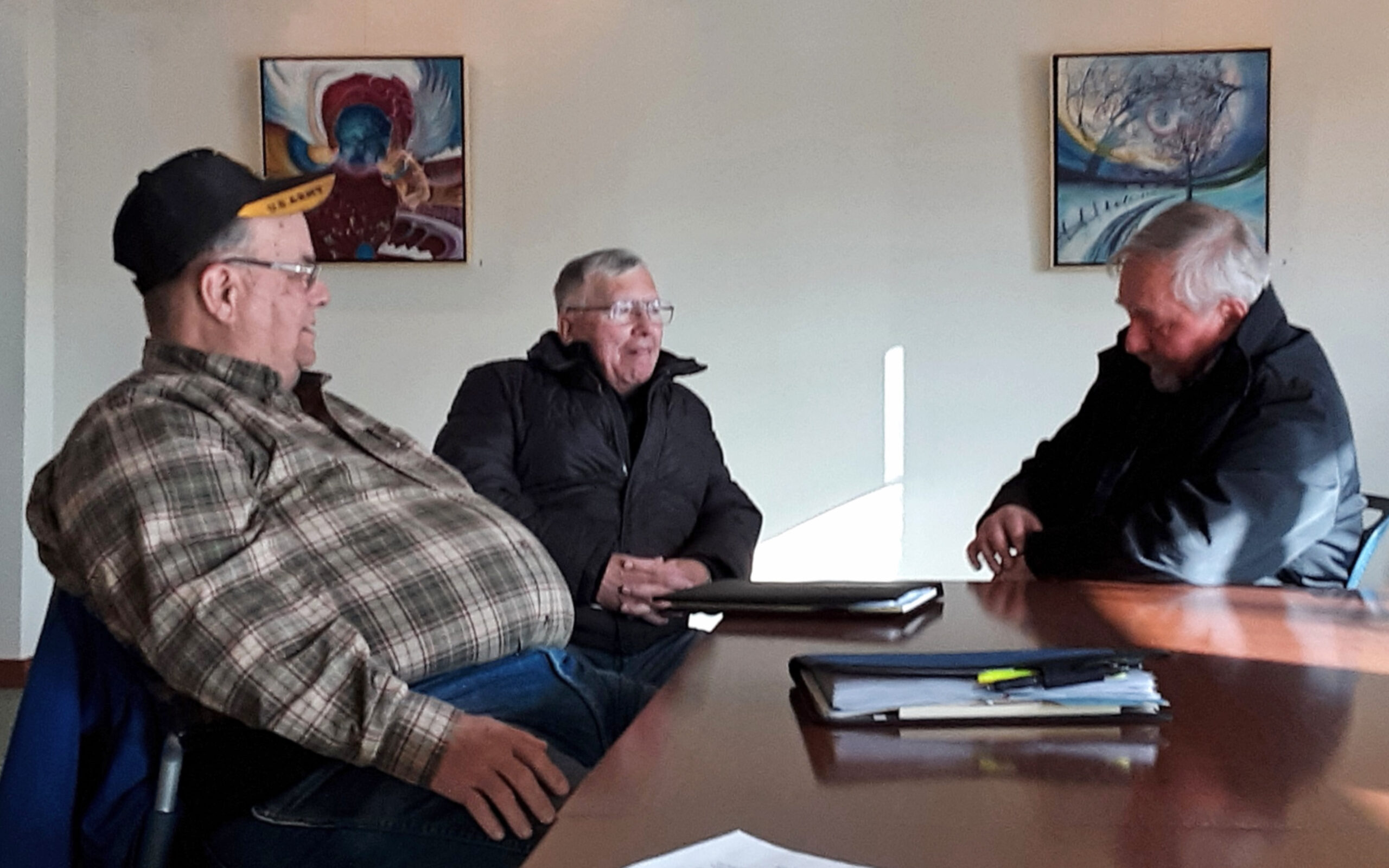
PRESQUE ISLE, Maine — If there’s one thing that friends and fellow Vietnam veterans Craig Fay, Jim Gehring and Carl Olsen have learned through the years, it’s that the often painful memories of that war are ones that will never fully leave them.
“What always gets me is the shouts,” said Fay of Presque Isle as he recently recalled hearing the final cries of many friends and fellow Marines who were killed after accidentally setting off explosive landmines in Vietnam. “We couldn’t get to them because of the rain and how the wind was blowing at the time.
“Then you go back in the morning and start picking up legs, bodies cut in half, people thrown here and there and you try to match them up,” said Fay, who was part of an Explosive Ordnance Disposal team during the war. “You can’t tell which limbs belong to which person.”
It wasn’t until 1984, over a decade after he left Vietnam in 1970, that a fellow veteran helped him realize that he had the symptoms of what society would later recognize as post traumatic stress disorder, or PTSD. Even though many mental health services exist today to help veterans cope with PTSD and people often celebrate veterans with holidays, parades and tributes, the world of the late 1960s and early 1970s that they returned to was entirely different.
“Once you got home you adjusted to civilian life as quietly and as quickly as you could and you never told anyone that you were a veteran,” said Gehring of Bridgewater, who served in the U.S. Navy from 1964 to 1968. “We talk about how people today are divided over politics, but back then the country was even more divided over Vietnam.”
Olsen of Caribou, who served in the Army during the Vietnam War from 1966 to 1968, added, “You didn’t talk to anybody when you got back because nobody wanted to talk to you.”
During a recent visit together at the public library in Presque Isle, all three friends agreed that one of the most challenging aspects of coming home was simply trying to fit into a world that they did not recognize anymore. As soldiers, they had learned to “to follow orders and do their job.” But as civilians, they could not initially adjust to a society in which their lives and the lives of those around them were not constantly in danger.
Both Fay and Gehring grew up in upstate New York and were 18 and 17 years old, respectively, when they enlisted in the military. Like many young men their age in the 60s, they chose to enlist instead of waiting to be drafted. Both put college on hold but, they said, the military gave little attention to whether someone had a doctoral degree or no college degree. The country simply wanted as many “warm bodies” as the military could find to fight the war in Vietnam.
When Fay returned home and resumed his college studies, he felt alienated from his classmates, who wouldn’t speak to him. Throughout the Vietnam war, college students were among the numerous activists publicly protesting the U.S. involvement in the conflict. As time went on, Fay became unable to describe and deal with the horrors he had experienced, even when around his family.
“My own mother told me to rot in hell because I was a Vietnam vet,” Fay said. “She’s gone now, but I’ve carried her words with me for years. She wasn’t sure what to make of me because of how much I’d changed.”
Even today, he and his fellow veterans still try to cope with PTSD as best as they can, whether their memories are triggered by being in a crowded room or hearing a sound that is similar to gunfire. While sharing stories with other veterans, they have come to realize that many of them have developed small habits directly linked to their wartime experiences.
“Before I go to bed at night, I’ll make sure all the doors are locked tight and the shades are down, and I know other veterans who do the same thing,” Gehring said.
Over the years, Fay and his friends have known many Vietnam veterans who have ended their own lives due to the intense depression, anxiety and feelings of isolation that result from the physical and emotional toll of their experiences. The most recent report of the U.S. Department of Veterans Affairs states that there were more than 6,000 veteran suicides each year from 2008 to 2016 and that in 2016 the rate of suicide was 1.5 times higher among veterans than among civilians.
The emotional challenges that veterans face is heightened in rural areas like Aroostook County, where they often have to make the three-hour trip to the Togus VA Medical Center in Augusta for specialized medical and mental health services. Though Gehring praises the veterans services that do exist in northern Maine, such as the Maine Veterans Home in Caribou, he said those agencies are often overwhelmed with waiting lists because of the high demand among local veterans for those services.
Gehring, Fay and Olsen have recently started an organization called the Aroostook Veterans Alliance and Auxiliary to assist veterans and their families in obtaining benefits and medical and mental health services and to keep them up to date with changes occurring within the VA. They also work with Homeless Services of Aroostook to provide veterans and their families help with relocating to permanent homes.
The auxiliary meets at the Opportunity Training Center at 25 Lombard Street in Presque Isle on the first Sunday of each month. They serve a meal at noon followed by a meeting at 1 p.m. For veterans like Fay, Gehring and Olsen, the meetings offer them a chance to forge friendships with their fellow veterans and offer a type of understanding that is difficult to find elsewhere.
“A lot of veterans I know came to Aroostook County to find peace. That’s why I came,” said Fay, who has lived in northern Maine since the 1980s. “They want to get away from the cities, the crowds, the noise, things that the general public doesn’t often think about.”







